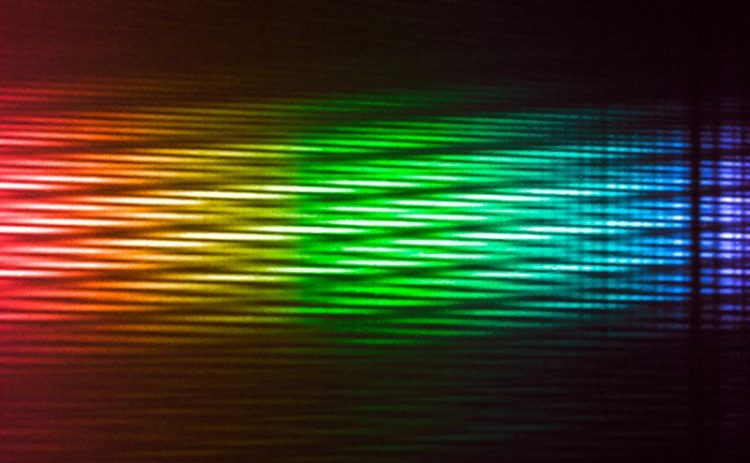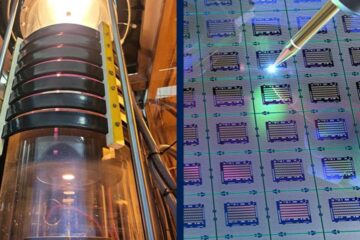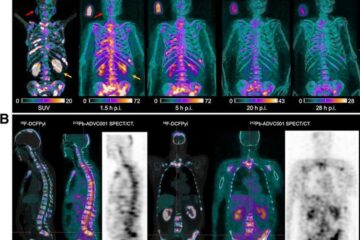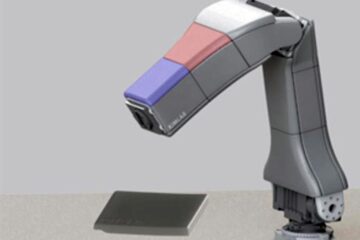High-resolution View into the Infrared Universe

Four-telescope interferogram of Sirius recorded at “First light” observations on 18 February 2018 with VLTI-MATISSE. The image is a colourised version of the interferogram at infrared wavelengths. ESO/MATISSE consortium
MATISSE is a second-generation Very Large Telescope Interferometer (VLTI) instrument providing extremely high spatial resolution. It is a combined imager and spectrograph for interferometry in the mid-infrared 3–5 μm spectral region (L- and M-bands) and the 8–13 μm region (N-band). MATISSE builds on the experience gained with the VLTI’s first-generation instruments, but vastly extends their capability to produce detailed images.
The instrument exploits multiple telescopes and the wave nature of the light to produce more detailed images of celestial objects than can be obtained with any existing or planned single telescope. High- resolution imaging in the infrared is technically demanding but has yielded spectacular results in detecting planet-forming discs around stars, images of the surfaces of stars, and dusty discs around Active Galactic Nuclei.
The target of the First Light observation was the bright star Sirius (see Fig. 1). Figure 2 shows the ESO VLT, which consists of four telescopes with a mirror diameter of 8.2 m (the Unit Telescopes) and four telescopes with 1.8 m mirror diameter (the Auxiliary Telescopes).
Because of the technical challenges, only a few mid-infrared interferometers have observed prior to MATISSE: the SOIRDETE prototype at the Plateau de Calern in France, the ISI interferometer of the Berkeley University and the Keck interferometer in the US, and, the ESO-MIDI instrument. MATISSE is designed for a broad range of science goals with as prime science cases the studies of the discs around young stars and Active Galactic Nuclei.
The capability of MATISSE is unique in the world: It will open the infrared L-, M- and N-bands (respectively 3.0–4.1, 4.6–5.0 and 7–13 μm) to long-baseline infrared interferometry. The angular resolution in the L-band will be about 3 milliarcseconds (mas), equivalent to 0.3 AU for a star at 100 parsec distance.
With various spectral resolutions between R ~ 30 and R ~ 5000, MATISSE can distinguish characteristic atoms and molecules in stars and galaxies. The second unique capability is high-fidelity mid-infrared imaging — closure-phase aperture-synthesis imaging — performed with up to four 8.2 m telescopes or 1.8 m telescopes.
“Single telescopes can achieve a maximum spatial resolution that is proportional to their mirror diameter. To obtain a higher resolution, we combine or interfere the light from four different VLT telescopes”, says Bruno Lopez from the Observatoire de la Côte d'Azur at Nice, the principal investigator of MATISSE. “This interferometric technique can provide us with a high spatial resolution that is proportional to the distance between the telescopes. Therefore, MATISSE is able to deliver the sharpest images ever in the 3–13 μm wavelength range.
Gerd Weigelt, Coinvestigator at the Max Planck Institute for Radio Astronomy, adds: “MATISSE will also allow us to obtain a high spectral resolution in addition to high spatial resolution. Therefore, we will be able to perform our studies in many different spectral channels distributed across an individual spectral line and even measure the velocity distribution in astronomical objects, which is very essential to reveal the physical properties of the objects.”
The MATISSE spectral bands will provide mid-infrared high angular resolution images that can be linked to observations at similar resolution in the submillimetre domain, with the Atacama Large Millimeter/Submillimeter Array (ALMA). MATISSE can be seen as a successor to MIDI (the MID-infrared Interferometric instrument) and a precursor of the future METIS instrument for the ELT.
The success of this MATISSE first light was only possible because of the hard and passionate work of many engineers and researchers and their institutes. Together with GRAVITY operating at the VLTI, MATISSE is a complex and challenging instrument: 3 tons, more than ten thousand elements machined and aligned to better than a thousandth of a millimetre, 20 cubic metres of volume.
Further testing of MATISSE will continue through 2018 and normal observations, open to all ESO astronomers, will begin early in 2019.
MATISSE was designed, funded and built in close collaboration with ESO, by a consortium composed of French (INSU-CNRS in Paris and OCA in Nice hosting the P.I. team), German (MPIA, MPIfR and University of Kiel), Dutch (NOVA and University of Leiden), and Austrian (University of Vienna) institutes. The Konkoly Observatory and Cologne University have also provided some support to the manufacture of the instrument.
Local Contact:
Prof. Dr. Gerd Weigelt,
Head of Research Group „Infrared Interferometry“
Max-Planck-Institut für Radioastronomie, Bonn.
Fon: +49 228 525-243
E-mail: gweigelt@mpifr-bonn.mpg.de
Dr. Udo Beckmann
Max-Planck-Institut für Radioastronomie, Bonn.
Fon: +49 228 525-321
E-mail: ubeckmann@mpifr-bonn.mpg.de
Dr. Norbert Junkes,
Press and Public Outreach
Max-Planck-Institut für Radioastronomie, Bonn.
Fon: +49 228 525-399
E-mail: njunkes@mpifr-bonn.mpg.de
Media Contact
All latest news from the category: Physics and Astronomy
This area deals with the fundamental laws and building blocks of nature and how they interact, the properties and the behavior of matter, and research into space and time and their structures.
innovations-report provides in-depth reports and articles on subjects such as astrophysics, laser technologies, nuclear, quantum, particle and solid-state physics, nanotechnologies, planetary research and findings (Mars, Venus) and developments related to the Hubble Telescope.
Newest articles

Silicon Carbide Innovation Alliance to drive industrial-scale semiconductor work
Known for its ability to withstand extreme environments and high voltages, silicon carbide (SiC) is a semiconducting material made up of silicon and carbon atoms arranged into crystals that is…

New SPECT/CT technique shows impressive biomarker identification
…offers increased access for prostate cancer patients. A novel SPECT/CT acquisition method can accurately detect radiopharmaceutical biodistribution in a convenient manner for prostate cancer patients, opening the door for more…

How 3D printers can give robots a soft touch
Soft skin coverings and touch sensors have emerged as a promising feature for robots that are both safer and more intuitive for human interaction, but they are expensive and difficult…





















